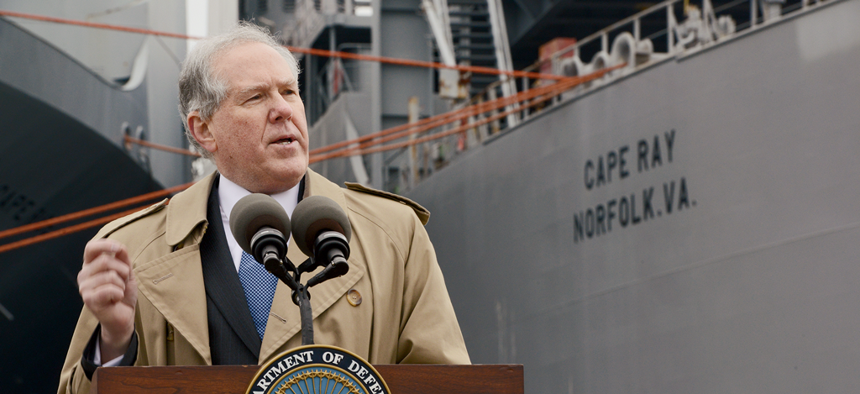
Under Secretary of Defense for Acquisition, Technology and Logistics Frank Kendall speaks to a group outside the MV Cape Ray, on January 2, 2014. Todd Lopez/U.S. Army
How the Defense Department's Procurement Problems Are Hurting National Security
The Pentagon spends too much time and money buying weapons that don't deliver. By Marcus Weisgerber
Frank Kendall cringes when he hears the term “acquisition reform.” The Pentagon’s top weapons buyer instead prefers the term “acquisition improvement,” which he says focuses more on the continued refinement of the entire process by which the Defense Department conceives, develops and purchases everything from ships and aircraft to trucks and ammunition.
By almost any measure, the system is broken. Consider this: The Defense Department spent at least $46 billion between 2001 and 2011 on a dozen weapons systems that never even entered production, according to the Center for Strategic and Budgetary Assessments. The two most expensive programs were run by the Army. The service spent $18 billion on the Future Combat Systems—a collection of networked vehicles and sensors—and nearly $8 billion on the Comanche stealth helicopter. That’s more money wasted in just two programs than the combined annual budgets of NASA and the National Nuclear Security Administration.
An October poll by the Government Business Council, Government Executive’s research arm, found more than 25 percent of defense personnel were not at all confident that the acquisition process provides the military services with the weapons they need (42 percent were only somewhat confident).
